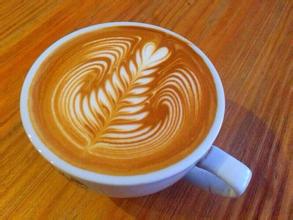Introduction to the steps of using the coffee powder crusher
The direction of pressing powder (which may be a little more complicated than we thought): vertically downward. If the pressure is inclined, the high-temperature and high-pressure hot water coming out of the boiling head will seek the infiltration of the layer with the least resistance, resulting in uneven extraction. At the same time, it is easy to have the channel effect that we often talk about. I need to explain this. I don't need much. But with regard to the direction of powder pressing, it will indirectly involve another problem, that is, the problem of powder distribution (grooming).
The biggest reason why we want to cloth powder, of course, is the control of the amount of powder, that is, if the amount of powder is distributed flat and the excess amount of powder is scraped off, then the same action each time can ensure the same amount of powder. In fact, there is another reason, that is, to distribute the powder evenly. Because a traditional theory is that the water in the head is evenly permeated, so the powder should be flat and the powder should be flat, so that the extraction is uniform. (some people think that the water coming out of the cooking head will eventually be concentrated at one point, so the powder hammer needs to be curved, but there is no essential difference between the two after test and blind test.)
Ok, this is the traditional way of thinking. Some people don't think so.
If you pay attention to Stephen Morrissey in 2008, he actually has no cloth powder after receiving the powder through the grinder. When the powder is piled into a tapered hill, press the powder directly. This practice has been bothering me. Even if discussed with several colleagues, there is no definite answer.
First of all, although our effluent is average and the pressure can be evenly distributed, a very important hardware limitation is the basket. First of all, take a look at a picture from coffeegeek, we can see that the vast majority of basket holes vary in size.
The main difference is the shape of the bottom of the powder hammer:
[Euro Curve]: the bottom of the powder hammer is arc-shaped, and the highest height difference at the edge of the powder hammer is in 3.355MM.
[American Curve]: relative to the bottom Radian of the Euro Curve, the height difference between the highest point of the arc and the edge of the powder hammer is reduced to 1.661MM.
[Flat]: the most common powder press with a flat bottom at the bottom.
[C-Flat]: it belongs to the combination of Euro Curve and Flat, it does not have an arc at the bottom like Euro, but like Euro, the pink hammer has a height difference, the bottom is a horizontal flat bottom, but the edges are curved, there is a height difference.
[Ripple]: it's hard to control. The bottom of the powder hammer is wavy.
[C-Ripple]: improved on the basis of Ripple, the powder hammer is made into a flat bottom at the edge, there are several raised concentric circles in the center, and the center of the pressed powder is wavy and the edge is horizontal.

Important Notice :
前街咖啡 FrontStreet Coffee has moved to new addredd:
FrontStreet Coffee Address: 315,Donghua East Road,GuangZhou
Tel:020 38364473
- Prev

Introduction to how to identify a good cup of ESPRESSO coffee and how to use it
Macchiato is more feminine and looks like a miniature version of cappuccino. The biggest difference between them, except that the weight of macchiato is 1/3 of that of cappuccino, macchiato is kung fu coffee with only a layer of milk foam and no milk, so the taste of espresso only stays on the lips, and the taste of espresso will not be diluted by milk. This coffee is in today's kung fu coffee.
- Next

The difference between Italian Coffee Grinder and other Coffee Grinder
Generally speaking, the parallel grinding disc has the advantages of fast rotational speed, fast grinding and more uniform grinding, while the disadvantage is easy to heat and relatively short life, while the tapered grinding disc has the advantages of not easy to heat and long life, and the disadvantage is slow and uneven. At present, the Japanese Fuji ghost tooth grinding plate can grind more uniform coffee powder, at the same time produce less fine powder, and the grinding efficiency is higher. But it is not suitable for espresso extract.
Related
- What is the Philharmonic pressure? How to use Philharmonic pressure to make delicious coffee
- Why does a hand grinder have more fine powder than an electric grinder?
- In addition to the hot mom, what is the difference between the versions of EK43 | ditting and Mahdi ek43?
- What kind of equipment do you need to make coffee by hand? Introduction to novice starter cooking equipment tools
- Espresso needs to be ground how thick and thin scale entry Italian Coffee Machine Bean Grinder investigation and Grinding course
- How much does it cost to open a small private cafe? How much does it cost to learn coffee? How to operate it?
- The difference between the flavor characteristics of hand-brewed coffee and coffee maker is hand-brewed coffee really better than coffee maker? Can I use a coffee machine to make coffee beans by hand?
- The difference between 01 and 02 of hario v60 filter cup what is the difference between 01 and 02 filter cup opening and cooking flavor
- What's the difference between the smart cup and the French kettle? Which is better, the French kettle or the Smart Cup?
- What's the difference between a smart cup and a V60 filter cup? The difference between the taste of smart cup and hand-brewed coffee

